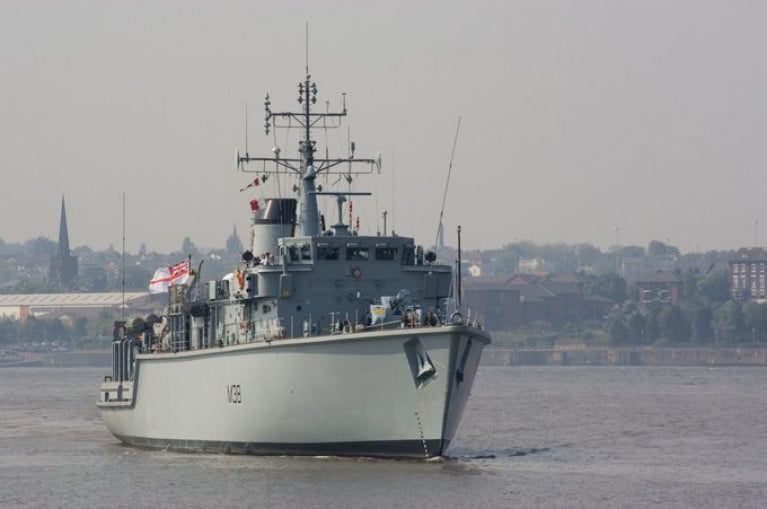Displaying items by tag: Minehunter
Minehunter from the UK’s Royal Navy Sandown-Class Calls to Dublin Port
A Sandown-class minehunter of the UK’s Royal Navy, HMS Penzance (M1O6) which departed Oban in west Scotland is on a visit to Dublin Port having arrived this morning, writes Jehan Ashmore.
During the week the 500 displacement tonnes HMS Penzance had been offshore of Newcastle, Co. Down and Afloat continued to track the vessel that reached Lambay Island yesterday.
An overnight anchorage took place off the west side of the island and offshore of Rush in north, Co. Dublin. This morning the 52m minehunter was off Howth Peninsula waiting for a pilot cutter from the port which took place at around 0900hrs, before proceeding into Dublin Bay.
A crew of 40 operate the minehunter which berthed at the North Quay Wall Extension, one of the port’s areas where foreign naval vessels are allocated berths. As routine, the port of call will enable crew rest and recreation.
HMS Penzance is named after the seaside town of Penzance in Cornwall and was commissioned by the Royal Navy in 1998. Also in service are more of the Sandown-class, HMS Pembroke and HMS Bangor, where the harbour-town on Belfast Lough was visited by HMS Penzance in June as part of the Sea Bangor Festival.
The primary role of HMS Penzance, as part of the First Mine Counter Measures Squadron (MCM1) is to work along the UK coastline, clearing mines to allow safe passage for larger forces. The minehunters also provide an additional layer of protection thanks to their firepower and conduct NATO exercises with other nations.
In 2000 the minehunter was deployed to the Middle East for three years as part of a Mine Countermeasures Squadron based out of Bahrain.
On completion of the call to the Irish capital, a departure on Monday and it is understood HMS Penzance is to return to Oban.
Harland & Wolff shipyard has acquired the former UK Royal Navy HMS Atherstone from the Ministry of Defence (MOD).
HMS Atherstone was launched in 1986 as the Hunt-class Mine Counter-Measures Vessel (MCMV), that is no longer in service.
The acquisition by Harland & Wolff of the vessel is with a view to refurbishing it for non-military uses, discussions for which have already commenced with interested parties.
Harland & Wolff is involved in a competition run by the MOD regeneration programme for the former HMS Quorn (M55). It believes that the acquisition of the former
HMS Atherstone will significantly de-risk the M55 regeneration programme given that the two vessels share a number of spare parts and components.
Should Harland & Wolff be awarded the regeneration programme for the M55, such spare parts and components on the HMS Atherstone will be utilised during the regeneration programme of the M55. It expects negotiations with the MOD on the M55 regeneration programme to be completed in the next few weeks with an announcement to be made thereafter, should an award be made in Harland & Wolff’s favour.
Harland & Wolff, group CEO John Wood, commented: “I am delighted that we have acquired the former HMS Atherstone.
“The benefits of this acquisition are two-fold; we now can significantly de-risk the M55 regeneration programme by utilising spares and component parts common to the two vessels, which has been recognised by MOD and will certainly help in closing out the negotiations over the next few weeks.
“Secondly, we also can utilise this platform as the basis for other clients’ projects, which will be a valuable revenue stream for 2023.
“I am pleased that we have generated a lot of interest for the repurposing of the former HMS Atherstone, and I expect to make announcements in this regard as soon as we have executed a refurbishment contract with a counterparty.”





























































